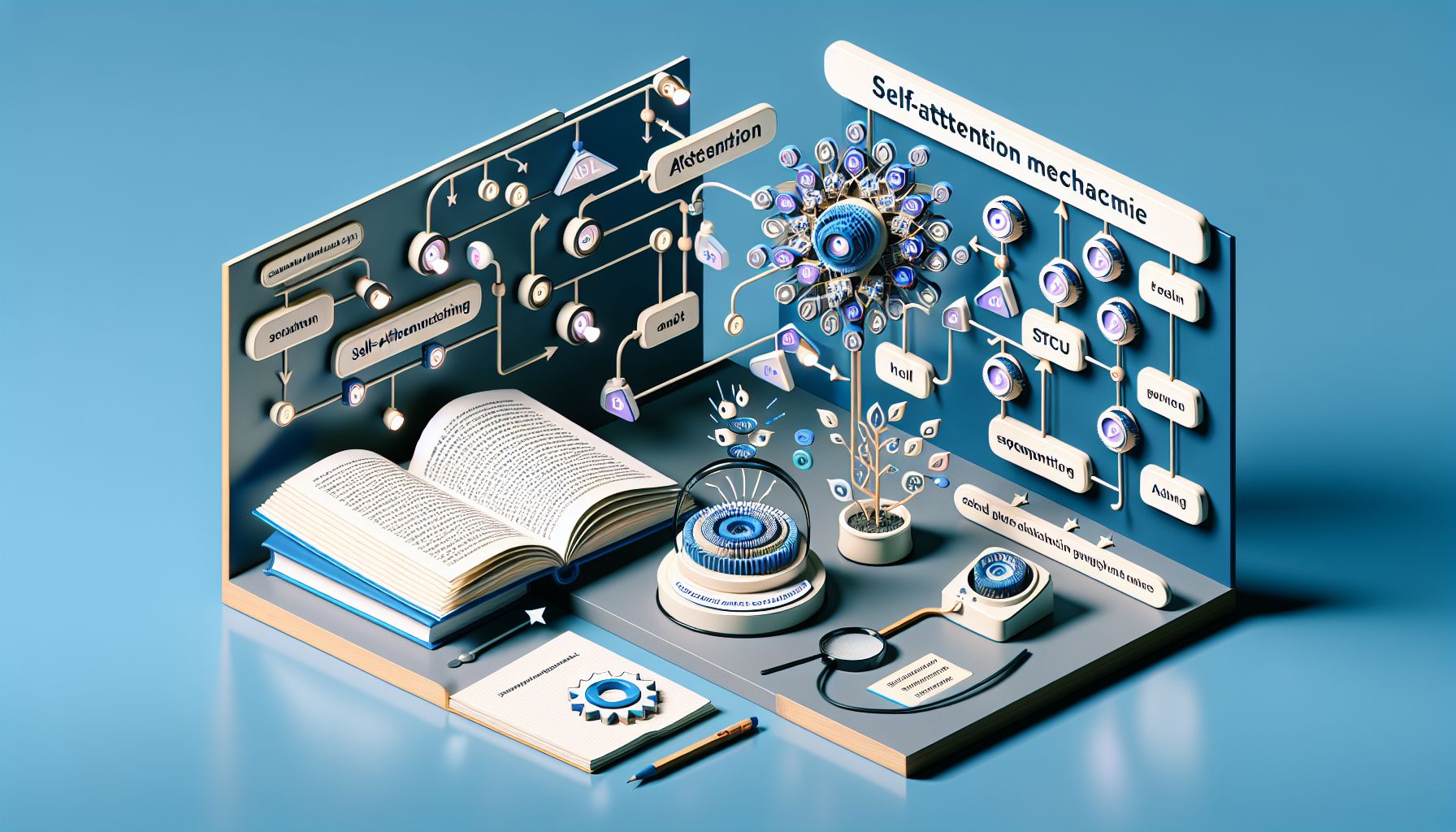📌 Let’s explore the topic in depth and see what insights we can uncover.
⚡ “Did you know that self-attention mechanism has significantly revolutionized Natural Language Processing (NLP)? Dive in to find out why it’s the secret sauce behind your favorite voice assistant’s remarkable comprehension skills!”
Have you ever been in a crowded room, trying to focus on one person’s conversation amidst the chatter? You’re probably able to filter out the irrelevant noise and pay attention to the relevant speech. 🔍 Interestingly, essentially what the self-attention mechanism does in the realm of Natural Language Processing (NLP). 📎 This blog post will take you on a journey through the dominant role of the self-attention mechanism in NLP. We’ll explore what it is, how it works, and why it’s so crucial in modern language models. So, buckle up for an exciting ride into the world of self-attention and NLP!
🏁 A Brief Introduction to Self-Attention Mechanism

"Unveiling the Power of Self-Attention in NLP"
Before we dive deep, let’s consider a quick overview of what self-attention is. At its core, the self-attention mechanism allows models to focus on the most relevant parts of the input for making predictions. 📌 In fact, a way for models to weigh the importance of input elements in relation to each other. Imagine you’re reading a sentence, “Jane went to the market because she needed vegetables.” To understand who “she” is, you need to relate it to “Jane”. This relationship is what self-attention captures, making it a powerful tool for NLP tasks. 🧠
🎯 The Workings of Self-Attention Mechanism
Now that you have a basic understanding of what self-attention is, let’s delve into how it functions. The self-attention mechanism can be broken down into three main parts:
**Query, Key, and Value Representations
** The input data (usually word embeddings) is transformed into queries, keys, and values using distinct weight matrices. These representations allow the model to decide which parts of the input to focus on.
**Attention Scores
** The attention scores are calculated by taking the dot product of the query and key, followed by a softmax operation. This results in scores that indicate the relevance of each input element.
**Matrix Multiplication
** Finally, the attention scores are multiplied with the value to produce the output. This step essentially weights the input based on its relevance. In a nutshell, the self-attention mechanism allows a model to attend to all positions of the input sequence and decide the importance of each, thereby capturing long-range dependencies between words and phrases.
💪 The Power of Self-Attention in NLP
The self-attention mechanism has revolutionized the field of NLP, and for good reason. Here are a few key reasons why it’s so important:
**Contextual Understanding
** Self-attention enables models to understand the context by relating different parts of the input to each other. 🔍 Interestingly, especially useful in tasks like machine translation and text summarization, where understanding the context is crucial.
**Handling Long Sequences
** Traditional models like Recurrent Neural Networks (RNNs) struggle with long sequences due to the issue of vanishing gradients. Self-attention, on the other hand, can handle long-range dependencies effectively.
**Parallel Computation
** Unlike RNNs, which process input sequentially, self-attention processes all inputs at once, making it highly parallelizable. This leads to faster training times.
**Interpretability
** The attention scores provide insights into what parts of the input the model is focusing on, making self-attention models more interpretable.
🚀 The Rise of Transformers in NLP
Transformers, which are entirely based on self-attention mechanisms, have become the go-to models for many NLP tasks. They were introduced in the seminal paper “Attention is All You Need” by Vaswani et al., and have since then sparked a revolution in the field. The Transformer model is composed of an encoder and a decoder, both of which use self-attention. The encoder captures the input’s context, while the decoder generates the output one element at a time, taking into account the encoder’s output and the previously generated elements. Transformer-based models like BERT, GPT, and T5 have achieved state-of-the-art results on numerous NLP tasks. 🧩 As for They, they’re capable of understanding nuances in language, making them highly effective for tasks like sentiment analysis, text generation, and machine translation.
🧭 Conclusion
Just like how you focus on the most relevant conversation in a noisy room, the self-attention mechanism allows models to attend to the most pertinent parts of the input. It’s a powerful tool that has revolutionized NLP, enabling models to understand context, handle long sequences, and process inputs in parallel. Transformers have brought the power of self-attention to the forefront, achieving remarkable results on a wide range of NLP tasks. As we continue to explore and fine-tune this mechanism, we move closer to the goal of creating AI models that truly understand human language. So, next time you’re reading a machine-translated text or interacting with a chatbot, remember there’s a good chance that a self-attention mechanism is working behind the scenes, ensuring that the AI understands you just as well as a human would.
🌐 Thanks for reading — more tech trends coming soon!
